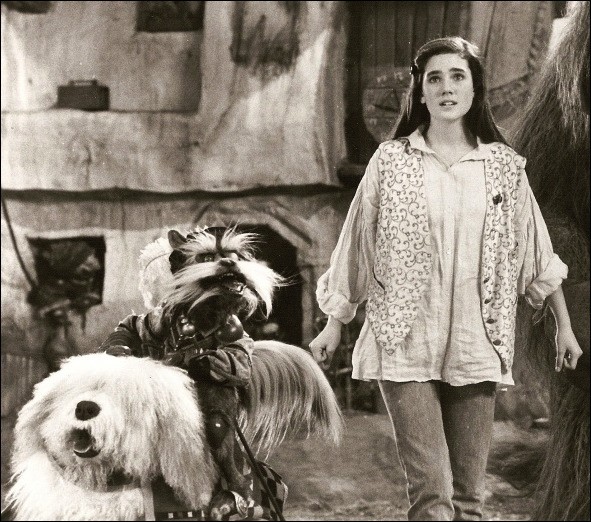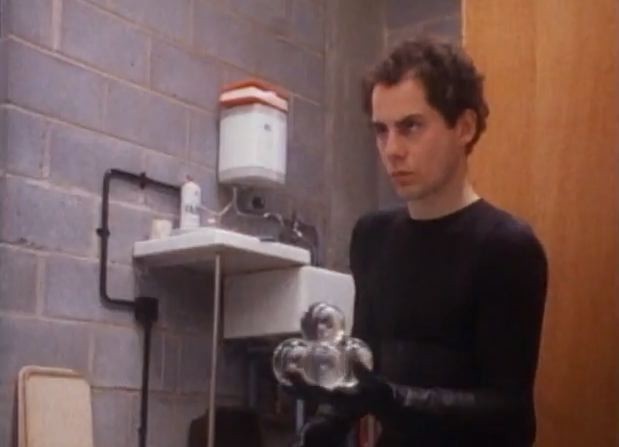Let’s talk about the movie Labyrinth. Let’s talk about behind the scenes of Labyrinth.
I mean Labyrinth the Jim Henson movie from 1986 (executive produced by George Lucas) that starred Jennifer Connelly and, more memorably, David Bowie.

I’ve never liked the movie. In fact, I hate the movie. But I sure know a lot of youngsters who loved it, and there’s an entire generation of youngsters who like it a lot more than anyone liked it when it first came out.
I hate it because it has too much crying baby in it, and there are two things I hate in the movies: loud telephone rings and crying babies. It’s not even the sound of the crying babies that gets to me — I can live with that. What gets to me is that I can’t watch that sort of thing without thinking, “that baby is really crying. They all stood around and held lights, cameras and booms while that baby sat there and cried and cried.”
In this case, the baby in the movie was played by Toby Froud. The conceptual artist and costume designer on the film was Brian Froud.
The one good thing about Labyrinth: Jennifer Connelly still had her eyebrows back then.

Recently I saw this bit of video from the Jim Henson Company, by way of io9, in which we get to see how they filmed the scenes where David Bowie’s character, Jareth, manipulates several crystal balls. The manipulations were actually done by juggler-genius Michael Moschen:

And, for the opinion of Monty Python’s Terry Jones, who wrote the screenplay, look at a reprint of a 1987 interview right here, in which Jones describes the many ways the movie turned out to be a disappointment to him. Including this:
“Most of the script changes were a result of casting David Bowie in the role of Jareth. After the first draft everybody said they loved the story and thought it was great. Then, about a month later, Jim came up and met with Brian [Froud] and myself and said that he wanted David Bowie to play the Goblin King. Of course as soon as he said that it blew the whole story because it meant he (Bowie) would have to appear all the way through the film and he would have to sing.”
Finally, for a real life labyrinth, try following these arguments from The Vigilant Citizen all the way to the conclusion. It’s called “A Blueprint to Mind Control,” and it’s truly about what’s behind the scenes.
The Vigilant Citizen specializes in seeing the deep meanings behind symbols in pop culture. Usually the deep meaning have to do with all of us (except them, I mean) being victims of mind control. But we are not victims of mind control. We’re not.
Their analysis of Labyrinth goes way behind trying to figure out the true meaning behind David Bowie’s haughty codpiece, which was nominated for an Oscar.
